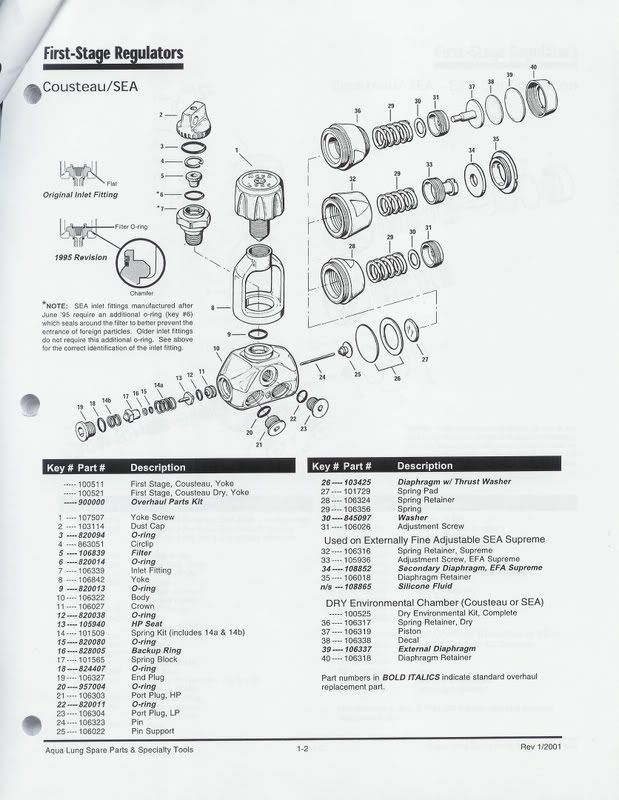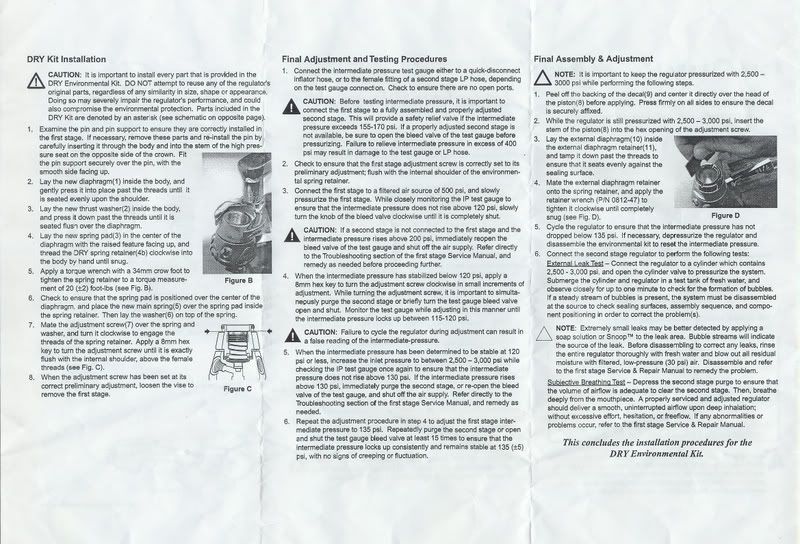The SEA uses what Aqualung calls silicone fluid and Seaquest calls silicone oil. It's a pure silicone, which should be oily not watery, is non-toxic, harmless to plastic and rubber, and doesn't freeze. Your best bet is to keep trying AL dealers until you find one willing to sell you some (bring a jar, since they'll probably have it in a gallon jug) since there is no really perfect, easy-to-find substitute. Silicone or O2 safe grease is not a safe substitute, as they are too thick, and there is no way to get the entrapped air out of them.
Poseidons for years used alcohol for the same purpose, but its not a good idea to try that in a reg not designed for it as it might damage the soft parts.
Probably your best bet if you can't get the AL stuff is the pure silicone shock oil is sold in hobby shops for use with RC cars, for about $4/2 oz. This would probably be my second choice after the genuine AL stuff, but toxicity is unknown. It comes in many different weights, but the weight is probably not too critical in this application so I would go for something in the middle to low range.
Another might be the pure 100% silicone "personal lubricants" sold at drugstores (maybe) and kinky inet sex shops. Any non-AL fluid should be freezer tested by leaving a sample overnight in the freezer to see if it gels or freezes. If it does, then it is not suitable.
Several experienced reg techs have told me over the years that they just use silicone spray out of a spray can. Bad idea! Most of these are a witche's brew solvents and propellants, and may contain non-silicone petroleum oil as well as silicone. Worse, there is no way to know what's inside by reeading the outside of the can. Many of the manufacturers label theirs as "Pure" or "100% Silicone" when the can actually contains less than 10% silicone and a witches brew of petroleum oils, solvents and propellants. If you are tempted to try one of these, go on the net and read the Material Safety Data Sheet (MSDS) for it - you will be amazed.
The pump bottle ones aren't much better, since most of them, like the bulk liquid and aqueous silicone sold by dive suppliers like Sport Diver and Trident, contain 60% or more water, so they have a freezing point not too much better than water. McNett even warns about not letting theirs freeze. If you are tempted to try any of these, give them the freezer test first
One other alternative - update the reg to the drysealed system. I haven't done one for a long time, so I can't say how cost effective it would be.
Installing the silicone is the last step in assembling the regulator and is done after the inner diaphragm and retainer have been installed and the IP is adjusted exactly as for the non-sealed and dry-sealed versions.
Fill the spring chamber until the fluid level is just about the spring retainer, then tilt the reg from side to side to work out any bubbles and trapped air. Add more fluid to bring the level to about 1/8" of the top , then install the outer diaphragm with the outer raised lip pointing up and out. Smooth the diaphragm with a fingertip to get all the air bubbles out from under it - there should be enough silicone fluid in the chamber so that the diaphragm is completely covered. Once all the airbubbles are out, screw in the secondary retaining ring, tighten it firmly with an appropriate tool, then retest the reg to be sure the IP has not changed, and do the normal post-servicing checks.






